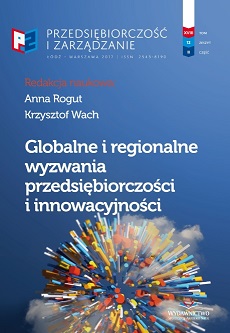Analiza efektywności działań innowacyjnych wykorzystujących fundusze UE na przykładzie polskich przedsiębiorstw sektora MŚP. Koncepcja zastosowania metody ROI2
Analysis of the efficiency of innovation projects supported by the EU funds – a case study of Polish SME companies. The concept of using the ROI2 method
Author(s): Tomasz NorekSubject(s): National Economy, Business Economy / Management, Micro-Economics, Economic policy, Economic development, EU-Approach / EU-Accession / EU-Development, Financial Markets
Published by: Społeczna Akademia Nauk
Keywords: innovation and innovativness; effectivness of innovation; SME sector in Poland; ROI2 indicator;
Summary/Abstract: In the modern economy, innovation is seen as a key factor in creating a competitive advantage and growth of enterprises. The ability to implement effective innovative projects is extremely important for entrepreneurs. The importance of innovation is reflected in EU policies which provide large funds for member states on the development of innovation. Despite the large interventions based on EU funds, innovativeness of the Polish economy is relatively low (compared with other UE countries and world leaders of innovation). This situation is particularly evident in relation to the SME sector companies. This dichotomy is an important subject of research in the field of economy the SME sector, and the applications can make a significant contribution to the strategy of building aid policy in the field of innovation financing. The purpose of this article is to analyze the efficiency of the use of EU funds for the development of innovation in the Polish SME sector. The author puts the research hypothesis: (H1) The use of EU funds does not significantly increase the performance of innovation in the SME sector. In order to verify the hypothesis author conducted to compare the effects of innovative activity of SMEs include the division of the company that benefited from EU funds for the development of innovation and the company that not exploited EU funds. The author used the method of the survey. The study was conducted in the years 2012-2016 on a sample of 600 SME sector. In addition, author conducted a critical analysis of the literature of the subject and has used commonly available statistics (published by the Polish statistical office, Eurostat).
Journal: Przedsiębiorczość i Zarządzanie
- Issue Year: 18/2017
- Issue No: 12.2
- Page Range: 317-332
- Page Count: 16
- Language: Polish

